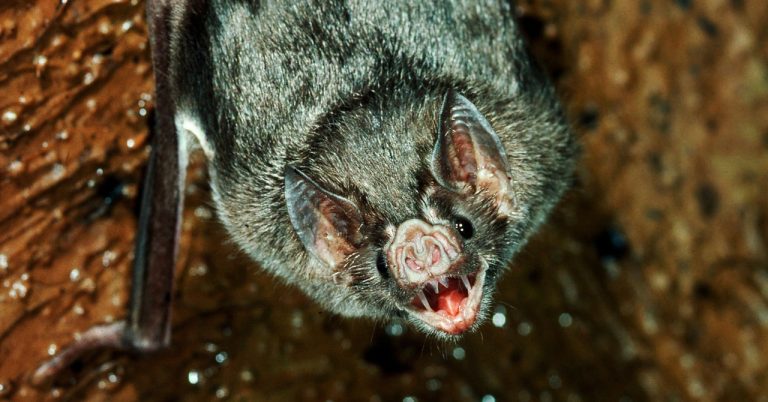But vampire bats pose a new threat because they feed on the blood of other animals. Their usual victims are livestock and sometimes wild mammals and birds. Using their sharp front teeth, they make a small incision in their victim’s skin and lap up a teaspoon or two of blood with their tongue. Bites don’t kill, but if a vampire bat carries rabies, the disease will eventually.
Vampire bats pose a particular threat to the cattle industry in Latin America. “There are a lot of livestock in the landscapes where they exist,” says Toni Piaggio, a research biologist at the U.S. Department of Agriculture’s National Wildlife Research Center, who carried out genetic analyzes on vampire bats to confirm their northward spread. « It’s likely that vampire bats were able to survive in areas where they couldn’t in the past, because humans put a lot of livestock on the landscape. »
In Mexico, vampire bat rabies costs the livestock industry more than $46.7 million a year, a study shows. USDA Report 2020. And there is a risk to human health. Infected cattle can transmit rabies to people who come into contact with them. “Our real concern is people exposed to rabies through livestock,” says Mike Bodenchuk, Texas director of the USDA’s Wildlife Services division and author of this report.
The USDA National Rabies Management Program anticipated the eventual arrival of the vampire bat. According to a government report published in September, Authorities have inspected 500,000 cattle at livestock sales, dairy farms, feedlots and ranches in Arizona, New Mexico, Texas and Florida since 2016 for evidence of bat injuries. vampire mice. So far, no bites have been found. The agency also led a campaign on both sides of the border to educate farmers and breeders to recognize bites and signs of rabies.
Bodenchuk says wounds are often found around the neck or tail. Since animals continue to bleed for some time after being bitten, dried blood can be a telltale sign. Other signs are neurological: the virus spreads to the brain and spinal cord, so infected cattle become disoriented and can no longer move their hindquarters. They can become aggressive and charge people.
In the United States, livestock producers are noticing the vampire bat’s spread northward. “This bat species is of great concern in agriculture due to its ability to transmit diseases, injure livestock and cause infections. Rabies is the most obvious problem due to livestock welfare and the potential for infection of humans,” says Gary Joiner, spokesperson for the Texas Farm Bureau. “This is a difficult situation that we would like to remedy as quickly as possible, so vigilance is crucial.”



